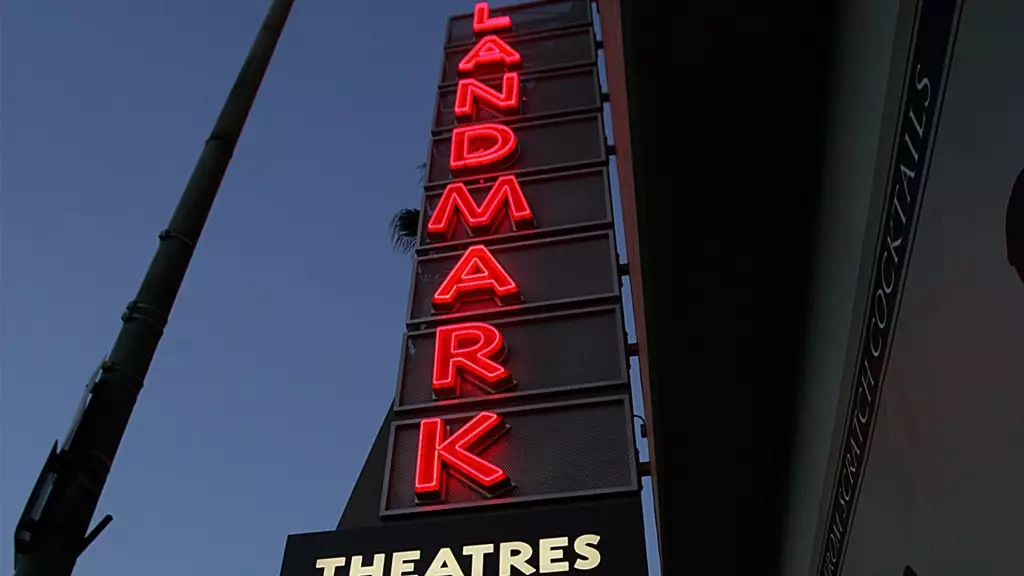Landmark Theatres, renowned for its unique offering of independent films and delightful viewing experiences, is poised for a significant transformation. This evolution is not only physical but also structural, as evidenced by the recent promotion of Kevin Holloway to Chief Executive Officer. Holloway, a seasoned veteran from the realms of Alamo Drafthouse and ArcLight Cinemas, is stepping into a critical role at a time when the cinematic landscape demands innovation and resilience. His dual title as both President and CEO underscores the company’s strategic pivot towards reinvigorating its identity amidst the challenges posed by the pandemic and shifting market dynamics.
Extensive Remodeling Plans
Landmark’s ambitious remodeling initiative will target three of its marquee locations: Bethesda Row, Lagoon, and Kendall Square. These modifications promise to blend modern aesthetics with the rich legacy of each venue, breathing new life into their operations. This effort is not merely an embellishment but a necessity to attract a younger, more discerning audience that craves both comfort and cutting-edge technology. With many theaters falling behind during the pandemic, Landmark’s commitment to upgrading its facilities is not just welcome; it is imperative for its survival in a post-COVID entertainment landscape.
Each location is set to feature stunning enhancements. Bethesda Row will unveil a new LED marquee, luxury recliner seating, and a reimagined lobby steeped in historical inspiration. Such elements aim to create a multi-sensory movie-going experience that resonates with patrons, offering both nostalgia and modernity. Lagoon’s proposed transformation includes hand-painted murals and a full-service bar, designed to enrich the overall patron experience while Kendall Square focuses on significant infrastructural updates, including a large-format auditorium, a lounge space, and heightened projection and sound capabilities. This comprehensive approach reflects an understanding of current consumer needs while boasting an appreciation for the theaters’ historical backgrounds.
Financial Shadows and Future Prospects
However, these exciting renovations cast light on a tumultuous financial backdrop. The bankruptcy auction that underscored Landmark’s financial struggles revealed a lack of interest from potential investors, signifying the precarious balance between legacy and profitability. Despite the tumult, the information suggests that some funding for the renovations may be secured through landlord partnerships, hinting at a collaborative approach to address mutual needs. Nevertheless, the sustainability of Landmark’s revitalization raises questions regarding the company’s financial health moving forward.
The closure of 32 theaters during the pandemic is another sobering statistic that demands attention. While the decision to prune the theater count may improve the financial profile by focusing resources on fewer venues, such measures can lead to apprehension about the theatre’s long-term viability. Holloway’s optimism is both a beacon and a challenge. As he remarked, his goal is to adapt the Landmark brand to the evolving marketplace while retaining its core essence. The real test lies in executing this duality successfully and ensuring that the essence of Landmark’s unique cultural contribution does not wane in the process.
Cultural Significance and Community Impact
Landmark Theatres has often been seen as a cultural pillar within communities, particularly for independent and arthouse cinema. Therefore, the emphasis on enhancing these venues underscores the importance of the theater experience in today’s socially and culturally dynamic landscape. By investing in upgraded facilities, Landmark is not just fixing its business model; it is reaffirming its role as a central hub for film culture, enabling local communities to engage with diverse storytelling and creative expression.
Moreover, the upcoming renovations are a crucial part of rebuilding trust with an audience that became accustomed to alternative viewing platforms like streaming services. Holloway’s vision to evolve the Landmark experience speaks to a broader trend where traditional cinemas must innovate to reclaim their relevance. By curating luxurious spaces that encourage social interaction and cultural engagement, Landmark can become more than just a place to watch films—it can serve as a vibrant community venue.
The Road Ahead
The transformation of Landmark Theatres is indicative of a broader resurgence in the cinema industry, where theaters must adapt and respond to new realities. While the financial challenges and legal complexities surrounding the company remain a concern, the strategic remodeling initiative represents a hopeful endeavor to revive enthusiasm for moviegoing. Ultimately, as Landmark navigates its challenges, its success will rely on a delicate balance of preserving its rich history while wholeheartedly embracing the future of cinema.
